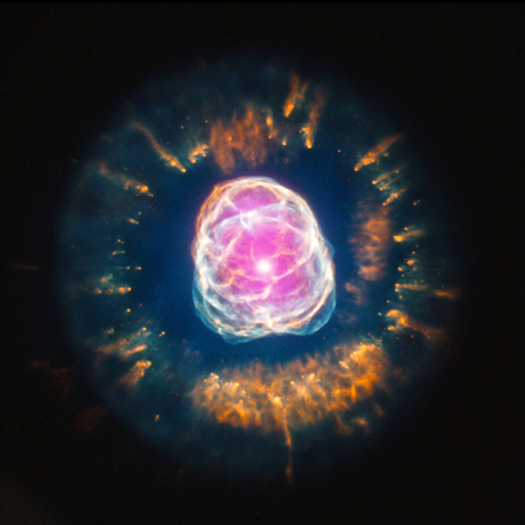NGC 2392: A Beautiful End to a Star’s Life
Stars like the Sun can become remarkably photogenic at the end of their life. A good example is NGC 2392, which is located about 4,200 light years from Earth. NGC 2392, (nicknamed the "Eskimo Nebula") is what astronomers call a planetary nebula. This designation, however, is deceiving because planetary nebulae actually have nothing to do with planets. The term is simply a historic relic since these objects looked like planetary disks to astronomers in earlier times looking through small optical telescopes.
Instead, planetary nebulae form when a star uses up all of the hydrogen in its core -- an event our Sun will go through in about five billion years. When this happens, the star begins to cool and expand, increasing its radius by tens to hundreds of times its original size. Eventually, the outer layers of the star are carried away by a 50,000 kilometer per hour wind, leaving behind a hot core. This hot core has a surface temperature of about 50,000 degrees Celsius, and is ejecting its outer layers in a much faster wind traveling six million kilometers per hour. The radiation from the hot star and the interaction of its fast wind with the slower wind creates the complex and filamentary shell of a planetary nebula. Eventually the remnant star will collapse to form a white dwarf star.
More at https://chandra.harvard.edu/photo/2013/ngc2392/
-Megan Watzke, CXC

